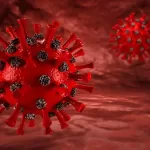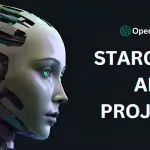
Exploring Ancient Partnership Between Moss and Fungi Unveils Intriguing Dynamics
February 8, 2024In the depths of winter, when the world seems frozen and lifeless, there exists a vibrant partnership between two seemingly unassuming organisms—moss and fungi. Researchers at Michigan State University delve into this ancient alliance, shedding light on its complexities and implications for life on Earth and beyond.
Led by Professor Björn Hamberger, whose fascination with the resilience of mosses has driven over a decade of research, the team’s latest study, published in The Plant Journal, uncovers the intricate interactions between mosses and fungi, dating back millions of years.
Conquering Land Together: An Evolutionary Tale
Mosses, those humble green carpets adorning forest floors, made their terrestrial debut 450 million years ago during the Ordovician period. But the transition from water to land was no solitary journey. It was a collaborative effort, with fungi playing a pivotal role.
As mosses grappled with the challenges of their new environment—water regulation, gravity, and UV exposure—they found allies in fungi. These early fungal pioneers, with their network of mycelium, provided vital nutrients to nascent terrestrial plants in exchange for carbon—a symbiotic relationship that has endured through epochs.
Professor Hamberger emphasizes the significance of this partnership, with over 80% of modern plants continuing to rely on fungi for growth and resilience. Looking ahead to a future where sustainable agriculture is paramount, understanding these plant-microbial interactions becomes increasingly crucial.
From Earth to the Cosmos: Mosses in Space
Beyond Earth, the implications of moss-fungi collaboration extend to the realms of space exploration. Mosses, with their ability to adapt and thrive in extreme conditions, offer promise as natural fabricators and oxygen producers during long-duration space missions.
By harnessing mosses’ biochemical pathways, researchers envision a future where these resilient plants aid in terraforming barren landscapes, such as Mars. Professor Hamberger’s team has already made strides in engineering mosses to produce valuable compounds, hinting at their potential as pioneers in space colonization.
Unraveling the Mysteries: Moss-Fungi Interactions Under the Microscope
To uncover the secrets of this enduring partnership, doctoral student Davis Mathieu spearheaded an experiment observing moss-fungi interactions in real-time. Utilizing advanced microscopy and genetic analysis, the team discovered a nuanced interplay influenced by endobacteria residing within the fungi.
Endobacteria, once thought to be mere passengers, emerge as key players in the moss-fungi dynamic. Their presence alters fungal behavior, impacting their relationship with mosses—sometimes as allies, sometimes as adversaries.
As Professor Hamberger reflects on the unexpected complexity of their findings, he underscores the importance of appreciating these often-overlooked organisms. In mosses and fungi, he sees not only a window into Earth’s evolutionary history but also a beacon of hope for humanity’s interstellar aspirations.
As winter gives way to spring and mosses emerge from their snowy slumber, let us pause to marvel at the intricate web of life that sustains our planet—a partnership forged eons ago, and perhaps, a blueprint for our future among the stars.


















